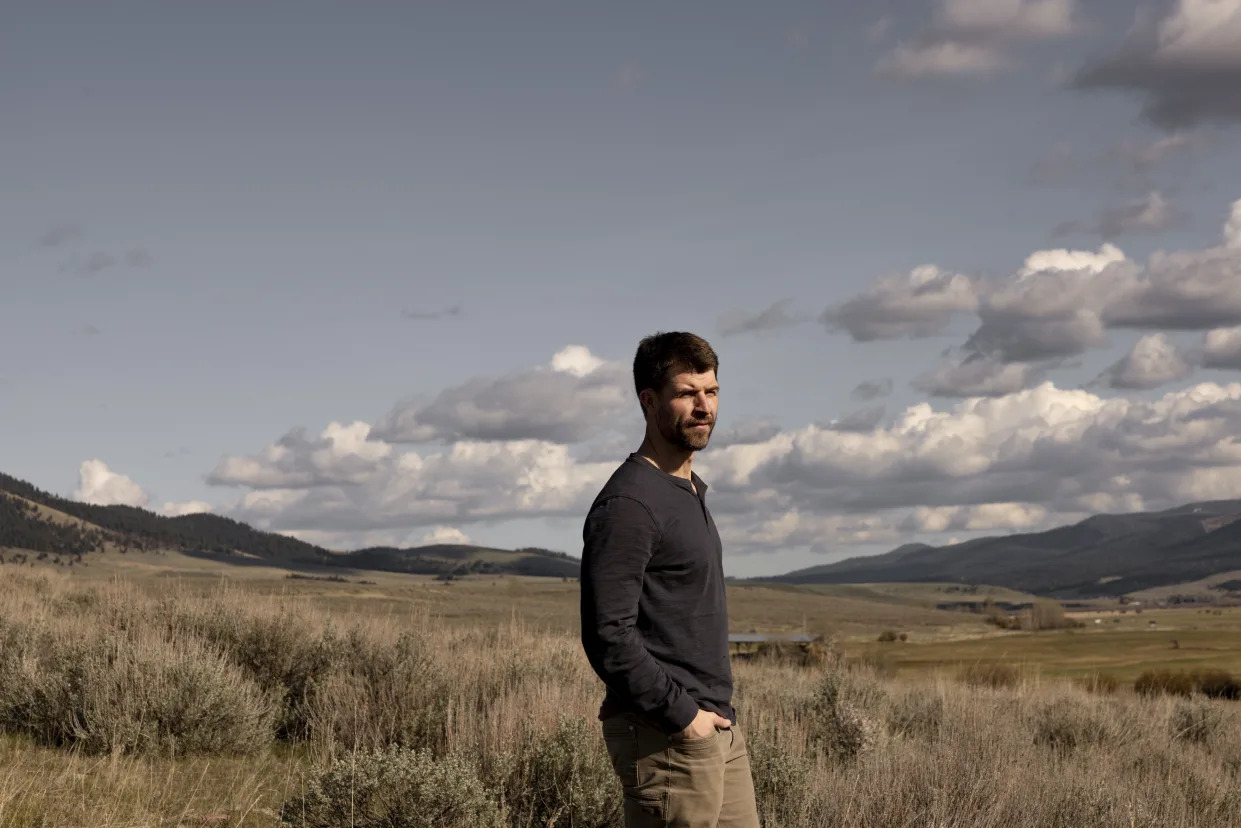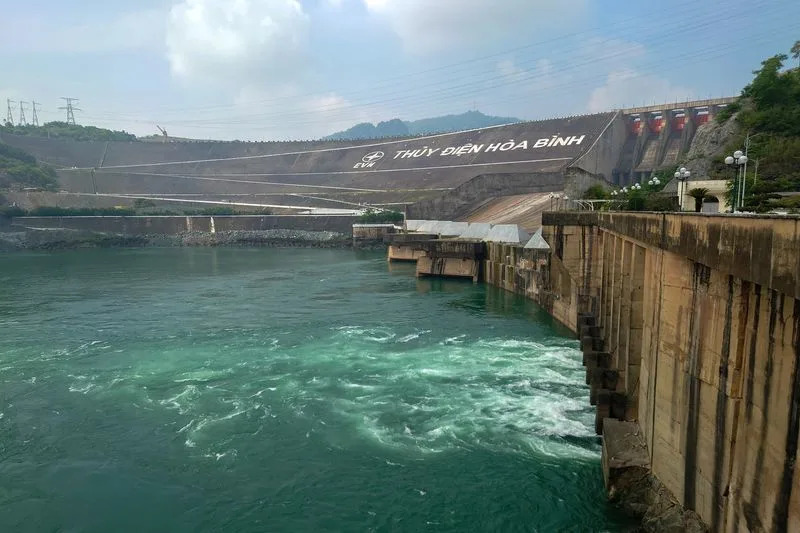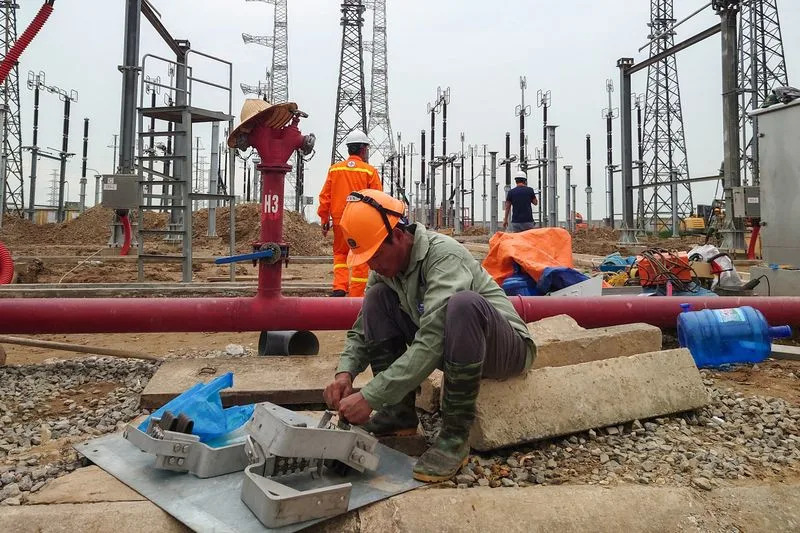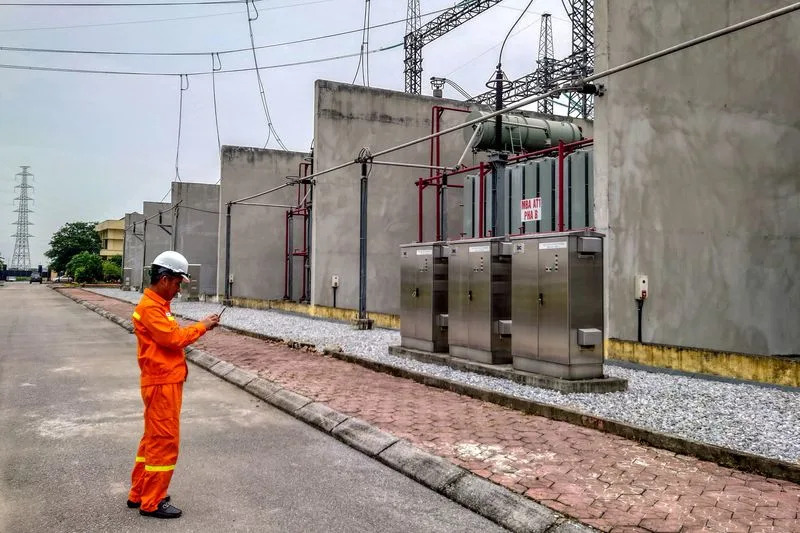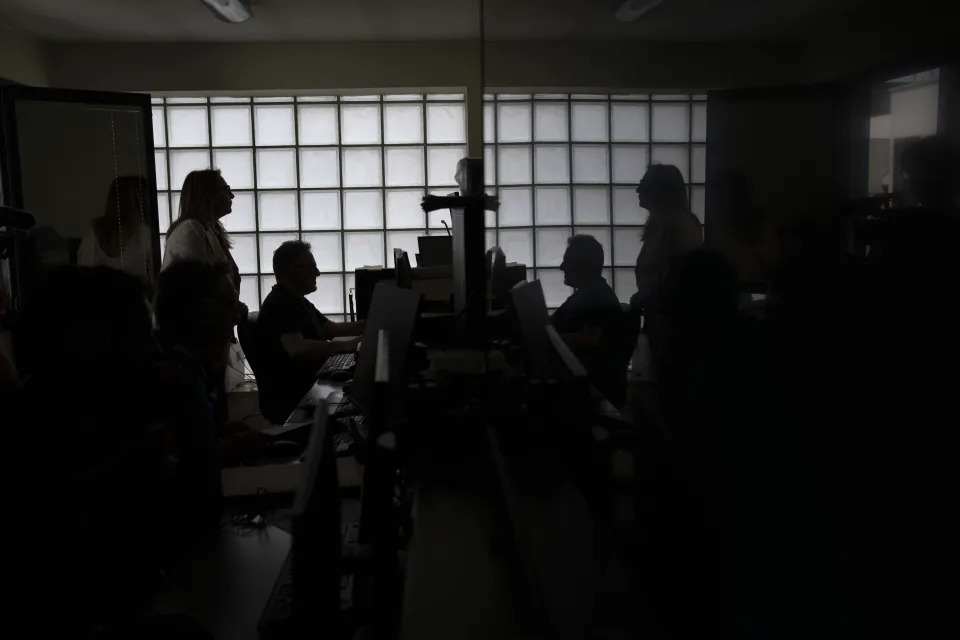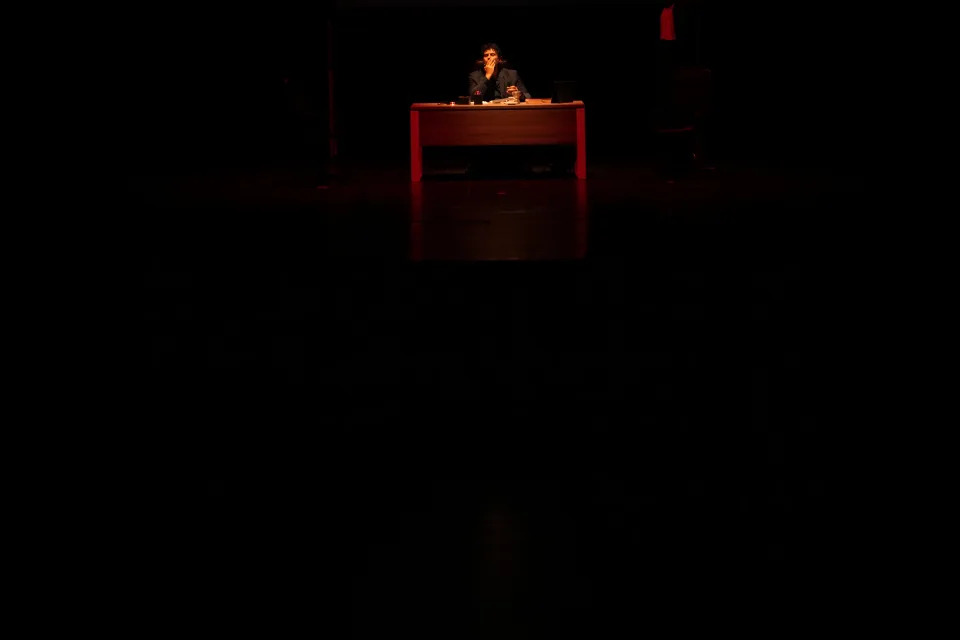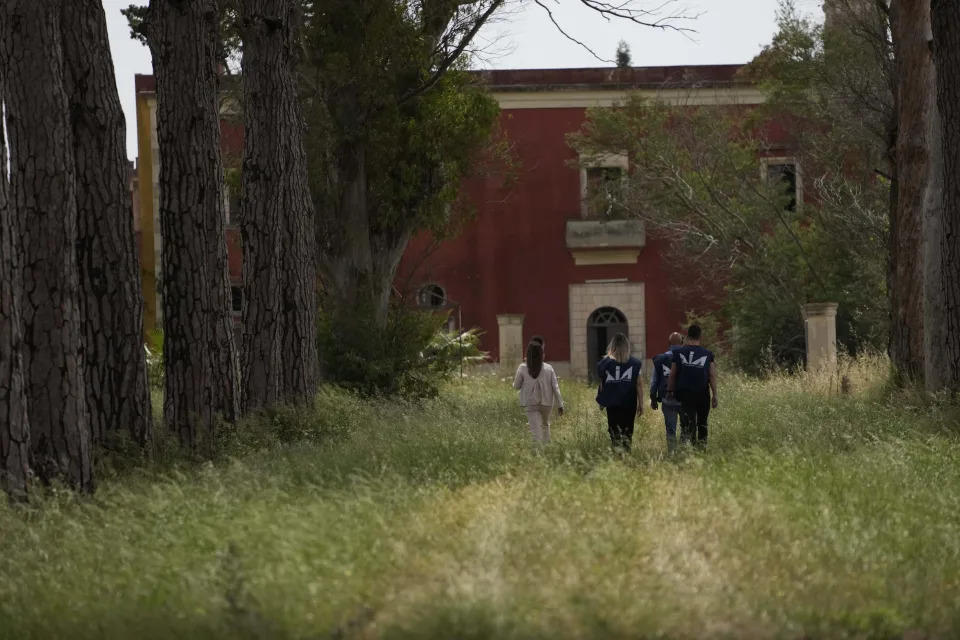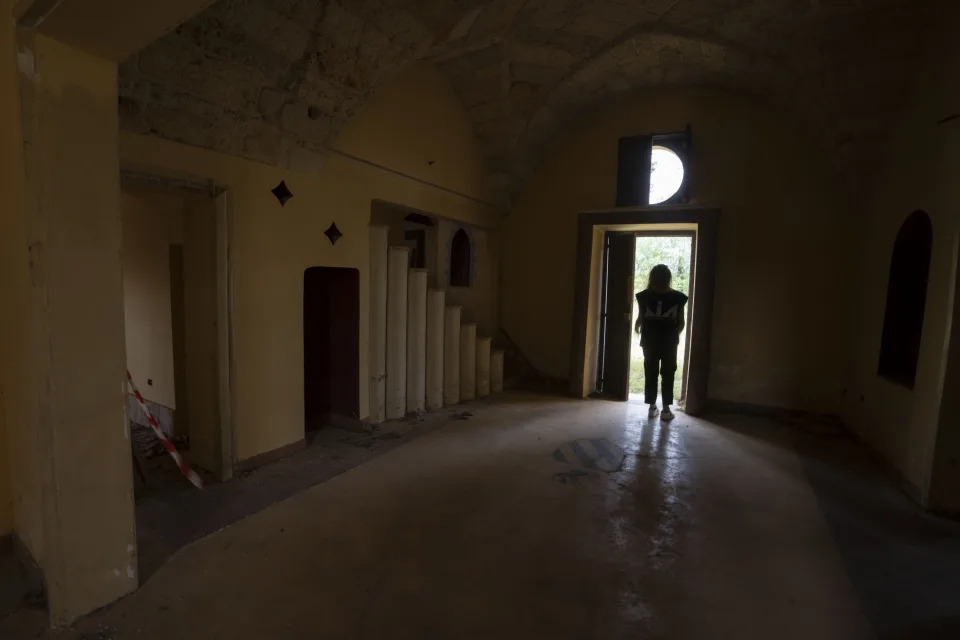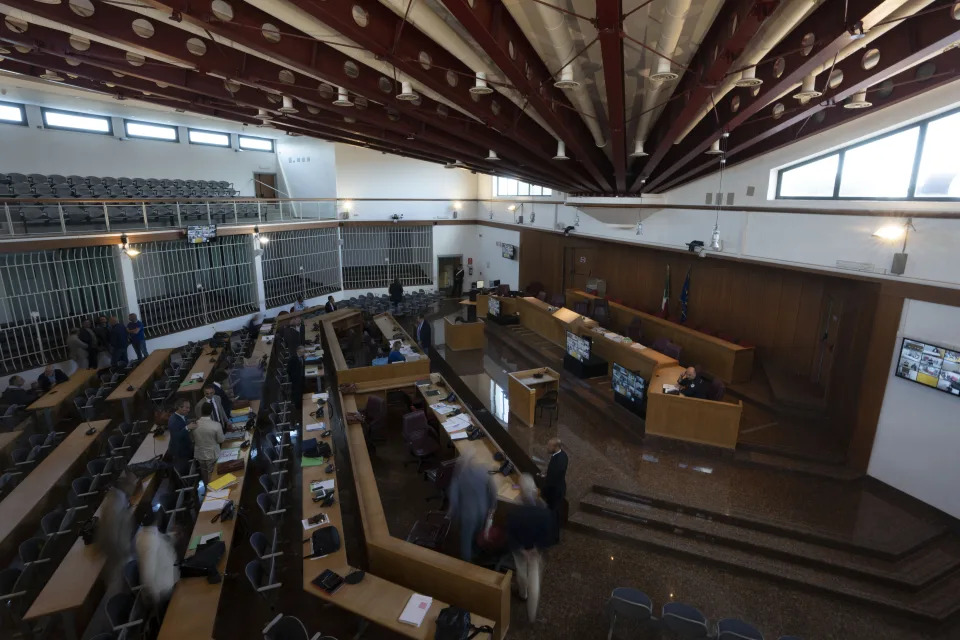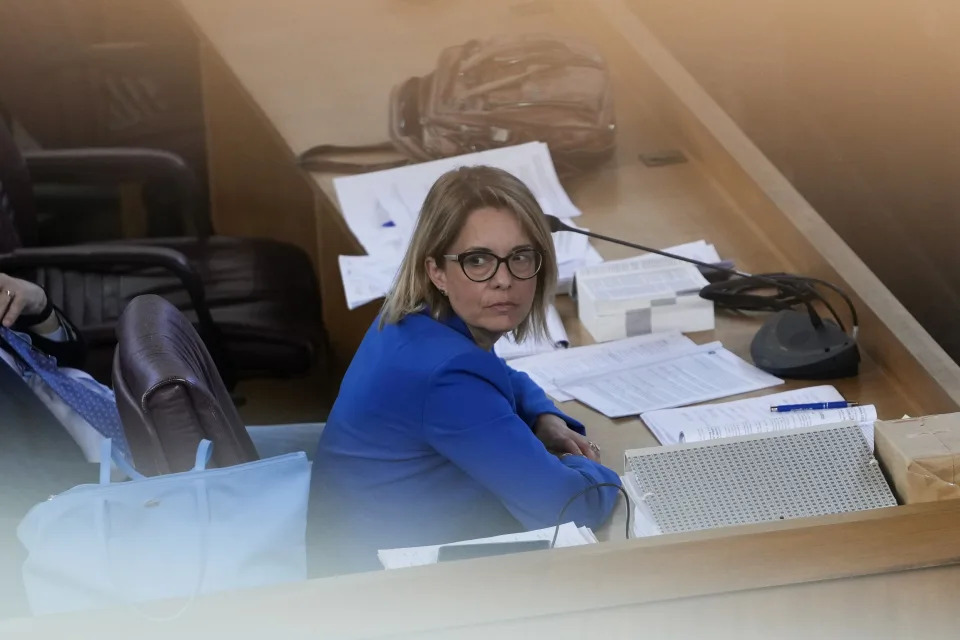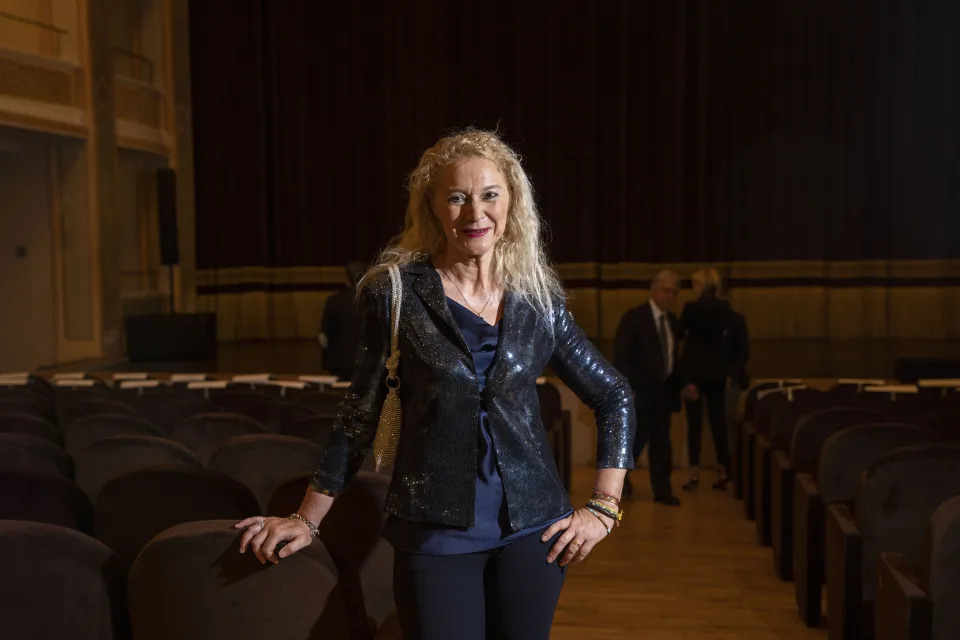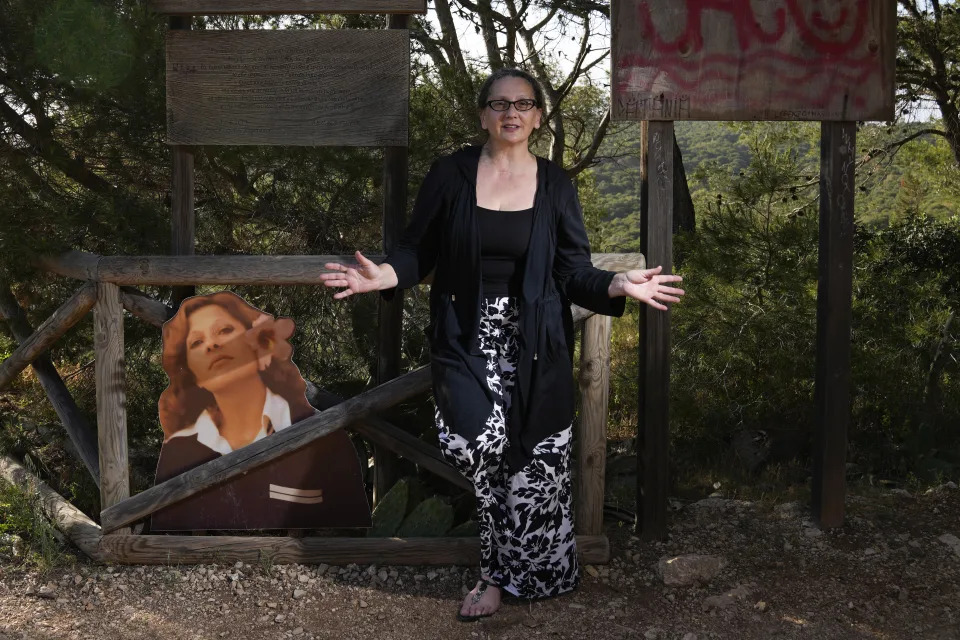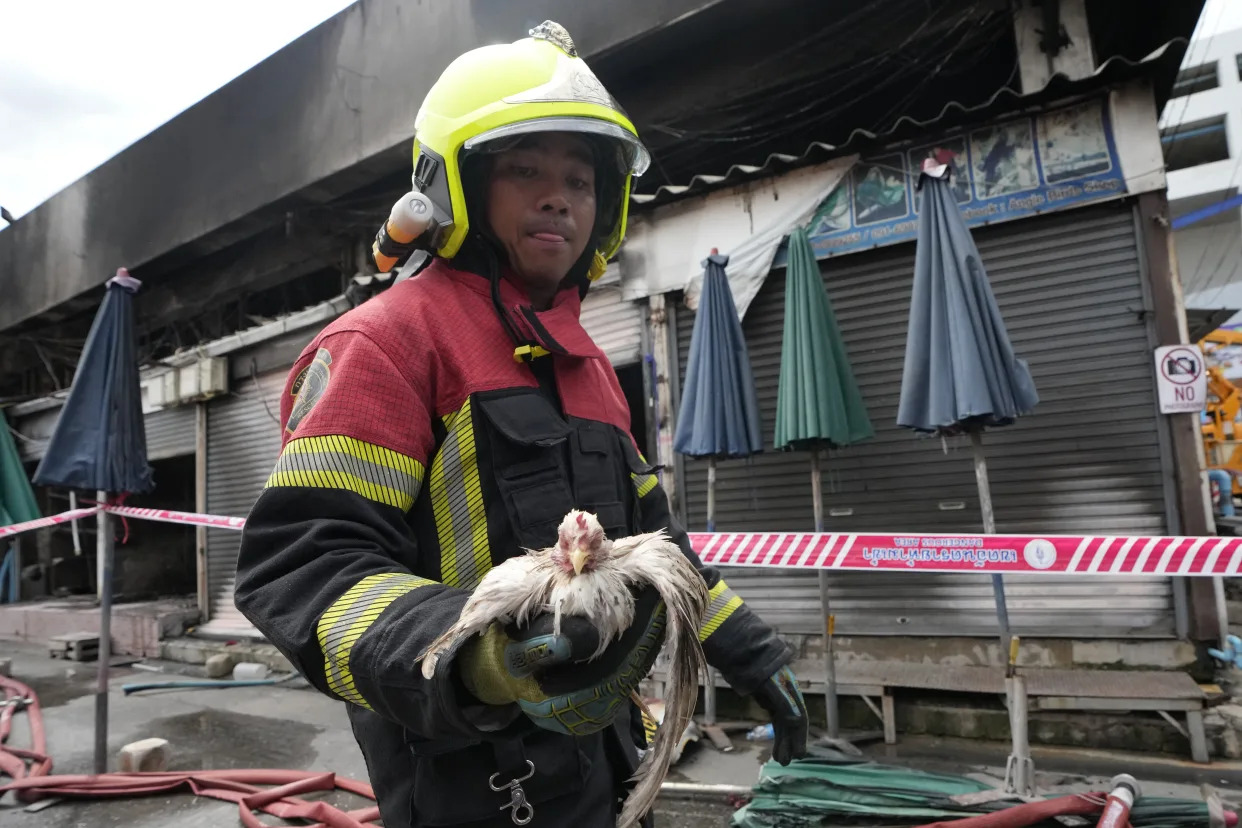Ryan Erik King
Thu, June 13, 2024

Photo: NASA
NASA confirmed that audio from a simulation channel dedicated to dealing with disaster scenarios was inadvertently broadcast Wednesday on its YouTube channel. The audio indicated that an astronaut was in distress onboard the International Space Station with a tenuous chance of survival, a terrifying scenario for enthusiasts following the feed.
The clip featured a female flight surgeon in the Solar System’s scariest conference call. She seemingly talked the ISS crew through a crisis in which the station’s commander was suffering from decompression sickness, more commonly known as the bends. It is most often encountered with underwater divers returning to the surface, but can also be experienced by astronauts returning from spacewalks. She strongly recommended that the crew put the commander in his space suit for emergency treatment in preparation for an evacuation back to Earth.
Thankfully, the space agency confirmed there was no emergency situation. All the crew members were healthy and safe in the middle of their designated sleep period. NASA explained that audio from an ongoing training simulation was mistakenly rerouted to the YouTube feed.
However, everything hasn’t been fine onboard the ISS. The first crewed Boeing Starliner flight to the station was delayed due to a helium leak on the spacecraft. More helium leaks appeared when it finally climbed to orbit last week. Then, the Starliner’s first docking attempt with the station had to be called off because of malfunctioning reaction-control thrusters. NASA should hopefully be prepared if there is any serious issue with the Starliner.
Nasa astronaut distress message broadcast in error
Tom Gerken - Technology reporter
Thu, June 13, 2024
[Reuters]
Nasa has confirmed audio shared widely on social media of astronauts in distress was a simulation broadcast on its YouTube channel in error.
In the clip, intended to be used for training purposes, a voice said an astronaut on the International Space Station (ISS) had a "tenuous" chance of survival.
The broadcast of the clip on Wednesday evening sparked speculation online about a possible emergency in space - but Nasa said all members of the ISS are safe.
"This audio was inadvertently misrouted from an ongoing simulation where crew members and ground teams train for various scenarios in space and is not related to a real emergency," it said on the ISS X page.
Private firm SpaceX also posted on social media to say there was no emergency aboard the ISS.
The incident, which occurred at 23:28 BST, led some people to believe that a real astronaut was suffering from decompression sickness in space.
It was made all the more believable because, unlike fake audio which usually appears first from spurious sources, this was broadcast on an official Nasa channel.
In the audio being shared on social media, a person asks the ISS crew to help get an astronaut into his spacesuit, to check his pulse, and to provide him with oxygen.
Though Nasa confirmed the audio was shared in error, it did not independently verify the recordings being shared online were the same that it broadcast.
Decompression sickness, also known as "the bends", is a problem typically associated with scuba diving, which bubbles form inside the body due to a change in external pressure.
Astronauts follow protocols to remove nitrogen from the body to prevent this from happening in space.
According to Nasa, its crew members aboard the ISS were asleep at the time the audio was broadcast, in preparation of a spacewalk at 1300 BST on Thursday.
It says this will still go ahead as originally planned.
Victor Tangermann
Wed, June 12, 2024

Pod Bay Door
Astronomers are excited to glean new insights into the formation of the universe and dark matter with the help of a space telescope called the X-Ray Imaging and Spectroscopy Mission (XRISM), a partnership between the Japan Aerospace Exploration Agency (JAXA) and NASA.
The telescope was successfully launched in September 2023. But as Space.com reports, its rollout didn't go as planned: one of the aperture doors covering its main instrument, a particle-detecting device dubbed Resolve, has remained jammed, causing scientists a great deal of distress.
Several attempts to remotely open the door have failed so far, with NASA confirming to Space.com that the telescope's planned operation of "at least 18 months" is not set in stone yet as officials discuss the "best path forward" — an incredibly unfortunate fate, considering XRISM was meant to provide scientists with a powerful alternative to NASA's aging Chandra X-ray Observatory.
It's especially pertinent as Chandra's operations are on very thin ice, with a potential budget crunch posing an existential threat.
Summer Jams
XRISM's closed-door dilemma is especially unfortunate because Resolve, an incredibly sensitive X-ray spectrometer, is otherwise working as planned after being launched into orbit. The instrument is a major upgrade over its counterpart attached to Chandra, and can detect the energy released by X-rays at a mind-blowing level of accuracy, down to changes in millikelvins.
To do just that, it has to be cooled down, well below the temperature of its already frigid surroundings.
"You are basically almost 30 times colder than the coldest part of outer space," Netherlands Institute for Space Research astrophysicist and XRISM science team member Aurora Simionescu told Space.com.
However, there's a silver lining to Resolve's closed-door conundrum. While the instrument can't measure extremely low-energy X-rays with the door jammed shut, it can measure high-energy X-rays, because those wavelengths remain unaffected by the obstruction.
Nonetheless, it's a sad reality for scientists, who were hoping for a revolution in the field of X-ray astronomy.
"I am absolutely gutted that we can't see below 2 keV," Simionescu told Space.com.
More on X-ray spectrometry: Astronomers Furious at Plan to Shut Down NASA Space Telescope
Jacopo Prisco
Thu, June 13, 2024

The authors of the May 6 study used data from the NASA Wide-field Infrared Survey Explorer, or WISE, telescope and Gaia observatory to identify seven candidate stars that could have Dyson spheres.
3D Illustration Getty Images/NASA
What would be the ultimate solution to the energy problems of an advanced civilization? Renowned British American physicist Freeman Dyson theorized it would be a shell made up of mirrors or solar panels that completely surrounds a star — harnessing all the energy it produces.
“One should expect that, within a few thousand years of its entering the stage of industrial development, any intelligent species should be found occupying an artificial biosphere which completely surrounds its parent star,” wrote Dyson in a 1960 paper in which he first explained the concept.
If it sounds like science fiction, that’s because it is: Dyson took the idea from Olaf Stapledon’s 1937 novel “Star Maker,” and he was always open about that. The late scientist was a professor emeritus at the Institute of Advanced Study in Princeton, New Jersey.
Still, coming from a thinker who some in the scientific community say might have been worthy of a Nobel Prize early in his career, the concept took hold and the hypothetical megastructures became known as Dyson spheres, even though the physicist later clarified that they would actually consist of “a loose collection or swarm of objects traveling on independent orbits around the star.”
In his paper, Dyson also noted that Dyson spheres would give off waste heat detectable as infrared radiation, and suggested that looking for that byproduct would be a viable method for searching for extraterrestrial life. However, he added that infrared radiation by itself would not necessarily mean extraterrestrial intelligence, and that one of the strongest reasons for searching for such sources was that new types of natural astronomical objects might be discovered.
“Scientists (at the time) were largely receptive, not to the likelihood that alien civilisations would be found to exist, but that a search for waste heat would be a good place to look,” said George Dyson, a technology writer and author and the second of Dyson’s six children, via email. “Science fiction, from ‘Footfall’ to ‘Star Trek,’ took the idea and ran with it, while social critics adopted the Dyson sphere as a vehicle for questioning the wisdom of unlimited technological growth.”
The elder Dyson himself argued, “It would be much more rewarding to search directly for intelligence, but technology is the only thing we have any chance of seeing.”

Physicist Freeman J. Dyson, shown here in August 1963, introduced this theory about hypothetical alien megastructures in a 1960 paper. - AP
In the 1960s, there was no way to actually search for Dyson spheres, but in more recent times many researchers have looked for them, including those at the SETI Institute, a nonprofit organization with a mission to search for extraterrestrial intelligence, and Fermi National Accelerator Laboratory, known as Fermilab. Now, a new study that looked at 5 million stars in the Milky Way galaxy suggests that seven candidates could potentially be hosting Dyson spheres — a finding that’s attracting scrutiny and alternate theories.
Possibilities
The authors of the study, published May 6 in the journal Monthly Notices of the Royal Astronomical Society, specifically set out to search for Dyson spheres, in the form of infrared heat near stars that couldn’t be explained in any other way.
Using historical data from telescopes that pick up infrared signatures, the research team looked at stars located within less than 1,000 light-years from Earth: “We started with a sample of 5 million stars, and we applied filters to try to get rid of as much data contamination as possible,” said lead study author Matías Suazo, a doctoral student in the department of physics and astronomy of Uppsala University in Sweden.
“So far, we have seven sources that we know are glowing in the infrared but we don’t know why, so they stand out.”
There is no conclusive evidence that the seven stars have Dyson spheres around them, Suazo cautioned.
“It’s difficult for us to find an explanation for these sources, because we don’t have enough data to prove what is the real cause of the infrared glow,” he said. “They could be Dyson spheres, because they behave like our models predict, but they could be something else as well.”
Among the natural causes that could explain the infrared glow are an unlucky alignment in the observation, with a galaxy in the background overlapping with the star, planetary collisions creating debris, or the fact that the stars may be young and therefore still surrounded by disks of hot debris from which planets would later form.

The authors of the May 6 study used data from the NASA Wide-field Infrared Survey Explorer, or WISE, telescope (left) and Gaia observatory to identify seven candidate stars that could have Dyson spheres. - NASA/JPL/ESA
The data used by the researchers comes from two active space telescopes — the Wide-field Infrared Survey Explorer, or WISE, from NASA and Gaia from the European Space Agency — as well as an astronomical survey of the sky in infrared light called The Two Micron All Sky Survey. Also known as 2MASS, the collaboration between the University of Massachusetts and the US space agency’s Jet Propulsion Laboratory took place between 1997 and 2001.
The candidate stars are all red dwarfs, the most common type of star in our galaxy. They are also dimmer and smaller than our sun, which makes follow-up observations more difficult. It’s unclear at this point whether the stars have planets around them, as they haven’t been observed yet by any of the telescopes that could potentially spot orbiting planets. However, many of the thousands of exoplanets scientists have identified so far orbit red dwarfs, which makes their presence likely; planets orbiting red dwarfs have a higher chance of being inhabitable, according to NASA.
An earlier study, published in March and using data from the same sources as the new report, had also found infrared anomalies among a sample dataset of 5 million stars in our galaxy.
A job for the Webb space telescope
“We got 53 candidates for anomalies that cannot be well explained, but can’t say that all of them are Dyson sphere candidates, because that’s not what we are specifically looking for,” said Gabriella Contardo, a postdoctoral research fellow at the International School for Advanced Studies in Trieste, Italy, who led the earlier study. She added that she plans to check the candidates against Suazo’s model to see how many tie into it.
“You need to eliminate all other hypotheses and explanations before saying that they could be a Dyson sphere,” she added. “To do so you need to also rule out that it’s not some kind of debris disk, or some kind of planetary collision, and that also pushes the science forward in other fields of astronomy — so it’s a win-win.”
Both Contardo and Suazo agree that more research is needed on the data, and that ultimately they could turn to NASA’s James Webb Space Telescope for more information, as it is powerful enough to observe the candidate stars directly. However, because of the lengthy, competitive procedures that regulate use of the telescope, securing access might take some time.
If Dyson spheres really exist, what could they be used for? “If you picture ourselves having as much energy as the sun is providing every second, we could do unheard of things,” Suazo said. “We could do interstellar travel, maybe we could even move the entire solar system to our preferred location, if we wanted.”
But don’t hold your breath, because the technology and the raw materials required to build the hypothetical structures are far beyond humanity’s grasp.
“They are so big that everything we have on Earth would not be enough to build them,” Suazo added. “Freeman Dyson said that we should dismantle Jupiter — the whole planet (for the raw materials).”
That supercolossal scale probably means that Dyson spheres, if they exist at all, are very rare.
“The importance of this work is that it provides the first strong evidence that there are not a lot of Dyson Spheres in our galaxy, contrary to the expectations of some that they might be an inevitable end-state of technological species’ expansion out into their solar systems,” said study coauthor Jason Wright, a professor of astronomy and astrophysics at Penn State University, via email.
“The candidates Matías (Suazo) has found are important because whatever they are — and they are likely stars surrounded by material from some sort of rare event, like a planetary collision, although they could be Dyson spheres — they are rare and interesting objects worthy of further study, for instance by the James Webb Space Telescope.”
Broken spheres
Dyson died in 2020 before any of his spheres could be found — although they are just one of a dozen ideas that bear his name.
“As a young scientist, Dyson showed that three competing quantum theories were actually the same theory — he summarily ended the competition,” said William Press, the Leslie Surginer Professor of Computer Science and Integrative Biology at the University of Texas at Austin. He was not involved in the study. “Later, he applied his genius to areas of astronomy, cosmology, the extraterrestrial realm, and also the very real problem of nuclear proliferation here on planet Earth. At the time of his death, he was recognized as a provocative and creative thinker.”
George Dyson also attested to his father’s fascination and comprehensive reach across disciplines.
“Taking advantage of a short attention span and an aversion to bureaucracy, he contributed to five fields of mathematics and eleven fields of physics, as well as to theoretical biology, engineering, operations research, literature, and public affairs,” the younger Dyson said. “Many of his ideas were controversial, with one of his guiding principles being that ‘It is better to be wrong than to be vague.’”
The approach of the researchers behind the new study could offer a more fruitful path in the search for extraterrestrial intelligence, said Tomotsugu Goto, an associate professor of astronomy at the National Tsing Hua University in Taiwan. He also was not involved with the study.
“However, contamination by circumstellar debris disks, which mimic Dyson Sphere infrared signatures, remains a concern,” he added in an email. “Authors argue that the debris disks around (dwarf stars) are rare, but the 7 candidate authors selected out of 5 million sources are also rare. Despite this, the seven candidates warrant further investigation with powerful telescopes for a more definitive evaluation.”
A May 23 paper published in response to the one by Suazo and his colleagues suggests that at least three of the seven stars have been “misidentified” as Dyson spheres and could instead be “hot DOGs” — hot dust-obscured galaxies — and that the remaining four could probably be explained this way as well.
Because Suazo’s study touches on the fundamental question of whether humankind is alone in the universe, the search for Dyson candidates straddles different fields — including basic sciences, philosophy and religion — and might therefore increase the involvement of young scientists and the interest of the scientific world in the topic, according to Zaza Osmanov, an affiliate of SETI and associate dean of the School of Physics at the Free University of Tbilisi in Georgia, who also was not involved with the research.
However, he added, the radiation fingerprint of the seven Dyson sphere candidates might be explained by natural phenomena as well. “The hypothesis of the artificial origin of any, even very interesting, radiation, should be the last springboard when all possible natural explanations are exhausted,” Osmanov said. “And for this, future research is necessary.”
As for Dyson himself, if he were still alive, he also would be highly skeptical that these observations represent a technological signature, his son George argued: “But the discovery of new, non-technological astronomical phenomena is exactly why he thought we should go out and look.”
Chris Eberhart
Thu, June 13, 2024
Going back from the 1940s and ‘50s to the present day, whistleblowers have reported UFO sightings around nuclear sites, but Department of Energy (DOE) Secretary Jennifer Granholm said they’re "drones."
Rep. Anna Paulina Luna, R-Fla., hit Granholm with rapid-fire questions, including if the DOE was reverse engineering crashed alien technology, and if it worked with a counter-terrorism task force.
Granholm's answers were, "I have no knowledge of that," and "Yes," respectively, which an expert told Fox News Digital is a "big deal" admission.
UFO SIGHTING ‘HOTSPOTS’ SHOW CLUSTERS AROUND NUCLEAR ACTIVITY AND WAR ZONES

A Fox News Digital-created UFO hotspot map based off information by the Department of Defense.
The fiery exchange between Luna and Granholm was about five minutes of a 2.5-hour Congressional Oversight Committee hearing on May 23.
Luna's last question, "Does the DOE work with JSOC (Joint Special Operations Command)?" raised eyebrows and created buzz on social media.
RUSSIAN UFO ENGAGEMENTS, SECRET ‘TIC TAC’ REPORT AND 3 KEY FIGURES SLIP UNDER RADAR AT CONGRESSIONAL HEARING
Granholm danced around the question at first, but Luna repeated the inquiry and demanded a yes or no answer.
Granholm finally responded, "Yes, we do."
Investigative journalist and leading UFO expert Jeremy Corbell said, "This was a bold move by Congress."
JSOC is a military task force under the command of the U.S. Special Operations Command that plans and executes special operations missions.
It's allegedly been noted by whistleblowers that JSOC worked with the DOE to retrieve crashed alien crafts and reverse engineer the tech, according to Corbell.
THIS TECH ‘COULD TURN US INTO A CHARCOAL BRIQUETTE’
"JSOC is likely hardcore involved with the crash retrieval program, under the authority of the CIA, so the DOE having to admit they work with JSOC is a big deal," Corbell told Fox News Digital. "Sec. Granholm did not like having to admit that."
JSOC has denied these allegations and implications in previous statements. Fox News Digital reached out to JSOC for comment, but didn't hear back.

Rep. Anna Paulina Luna asked Department of Energy Secretary Jennifer Granholm about reverse engineering alien technology.
Luna told Fox News Digital in an email that "some people, like the secretary (Granholm), would like to make a mockery of these things," referring to the topic of UAPs, but "over 50% of Americans think that UAPs potentially exist."
That "means that the federal government should take this seriously," the Florida Republican lawmaker said. "I directly confronted Energy Secretary Granholm with multiple reports, as well as a statement by the Pentagon, and she still denied the facts.
"That's why I believe the American people have lost faith in our government to be transparent."
UFOS AREN'T JUST IN THE AIR; THEY'RE UNDERWATER AND ‘JEOPARDIZE MARITIME SECURITY’: EX-NAVY OFFICER
Luna's exchange with Granholm wasn't the end of her back and forth with the DOE.
She submitted nine questions to the DOE, which were exclusively obtained by Fox News Digital. They're listed below.
A DOE spokesperson said in an email, "DOE is in receipt of the QFRs and will respond to the Committee and Congresswoman directly."

Recording of UFO flying by the USS Omaha off the coast of San Diego in July 2019 and then vanishing into the ocean without a splash or crash debris.
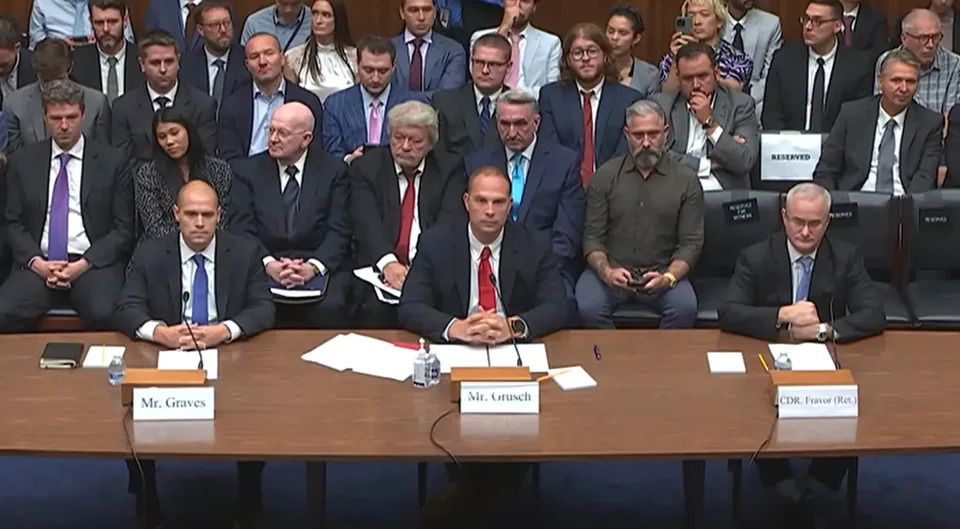
Former Navy pilot Ryan Graves, ex-Navy commander David Fravor and former U.S. intelligence officer David Grusch testify before the House of Representatives subcommittee focused on UFOs.
How are unmanned aerial vehicles (UAVs) and unmanned aerial system (UAS) designated by DOE?
What characteristics would an object need to display to be considered a UAP?
How many UAP incursions have been referred to the All-domain Anomaly Resolution Office (AARO)?
At Formula One events, private companies are deployed which can disable drones and trace the operator – is that technology available to the DOE?Follow Up: If so, how many drones were you able to track to an operator and how many were you able to disable?
Follow Up: If so, how many drones were you able to track to an operator and how many were you able to disable?
How many UAP incursions have been reported internally this year alone, across all Critical Infrastructure Locations with DOE oversight (e.g. nuclear armament, refinement, and deployment sites like Pantex and Savannah River Site)?
Several reports indicate frequent drone incursions over DOE nuclear facilities, including an incident on April 1, 2021, at Lawrence Livermore National Laboratory (LLNL). Can you detail the DOE's current security measures to prevent unauthorized drone activities, and what steps are being taken to enhance these measures given the frequency of such incidents?
The recent AARO report highlights that better data collection is crucial for understanding UAP phenomena. What technologies and methodologies are the DOE employing to gather and analyze data related to UAP sightings, particularly those near critical infrastructure?
Given the potential security and safety risks posed by UAPs near nuclear facilities, what protocols are in place to ensure the safety of DOE personnel and the public? Have there been any documented cases of adverse health effects on personnel due to UAP encounters?
In the spirit of transparency, how does the DOE handle the public disclosure of UAP incidents? Are there any plans to declassify and release more detailed reports on UAP sightings over DOE facilities to inform and reassure the public?
Before Luna and Granholm's exchange, Rep. Tim Burchett, R-Tenn., asked the DOE secretary about "suspicious occurrences" of UFOs around nuclear facilities.
The question appeared to catch Granholm off guard.
PENTAGON UFO REPORT SAYS THERE ARE NO ALIENS: ‘IF US WON’T FESS UP, OTHER NATIONALS WILL'
She responded by saying the Department of Defense concluded there's no evidence of UFOs or aliens.
"But there may be drones that may be nefarious," said Granholm, who emphasized there are safety protocols and defenses in place.
As both lawmakers pointed out, potential UFO sightings near nuclear sites predate drones.

This was one of the examples of an unexplained UAP in NASA's Sept. 14 report.
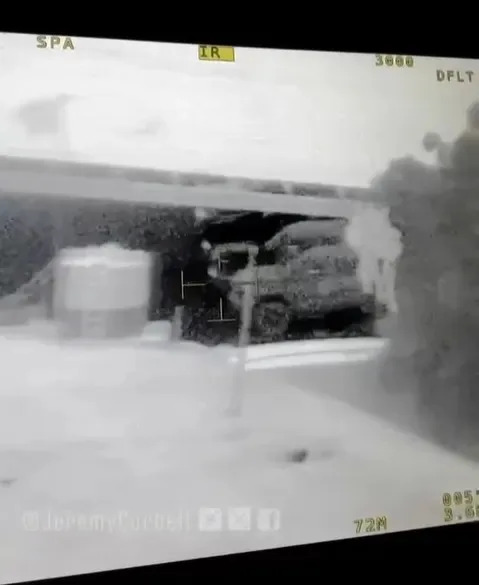
An unexplained jellyfish-looking object flew over a military base in Iraq in 2018.
A recently declassified document about a UFO program called Kona Blue details the government's plan to collect crashed alien tech to reverse engineer it.
Former U.S. Sen. Harry Reid said in a June 2009 letter that "much progress has been made with the identification of several highly sensitive, unconventional aerospace-related findings."
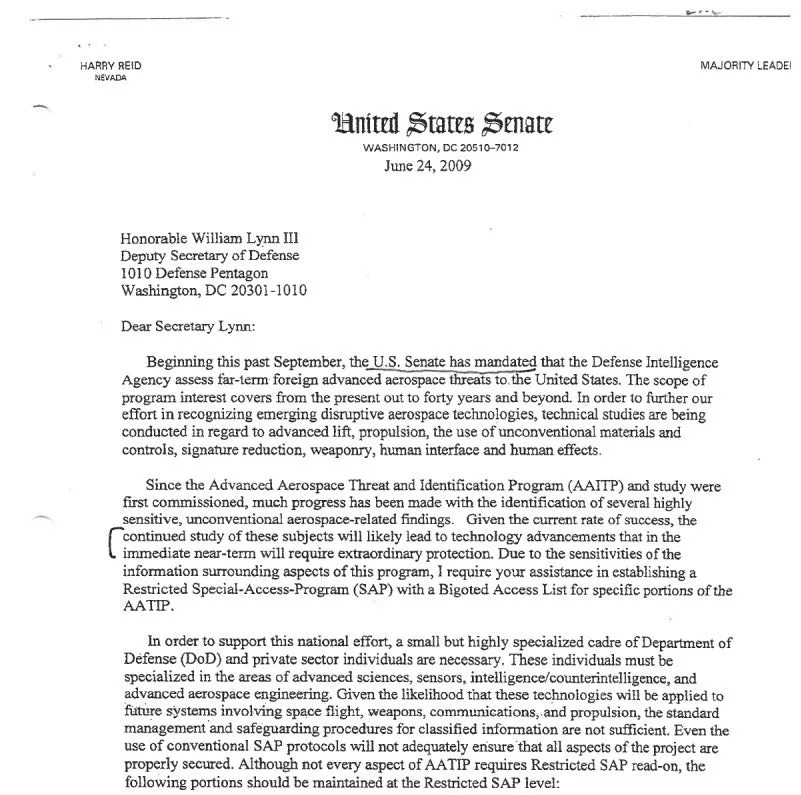
Snippet from a 2009 letter from former US Sen. Harry Reid about the need to keep the government's crashed alien tech retrieval program and reverse engineering efforts a secret.
"Given the current rate of success, the continued study of these subjects will likely lead to technology advancements that in the immediate near term will require extraordinary protection ….
"Given the likelihood that these technologies will be applied to future systems involving space flight, weapons, communications and propulsion, the standard management and safeguarding procedures will not adequately ensure that all aspects of the project are properly secured."
READ THE FULL DECLASSIFIED KONA BLUE REPORT
The AARO, a specialized wing of the Pentagon tasked with investigating UAPs, said Kona Blue was mentioned by "multiple" whistleblowers during its investigation into allegations of a crash retrieval program.
The AARO said in a report about the history and origin of Kona Blue that it was "proposed" to Homeland Security leadership "but was never approved or formally established."
The project never received any materials or funding, according to the AARO, and Homeland Security disapproved the project and directed its immediate termination in 2011, "citing concerns about the adequacy of justification for the program."
The full origin and history, according to the AARO, is here.
Original article source: Energy czar makes UFO admission during GOP lawmaker's fiery exchange – and that's not where it ends
Victor Tangermann
Wed, June 12, 2024
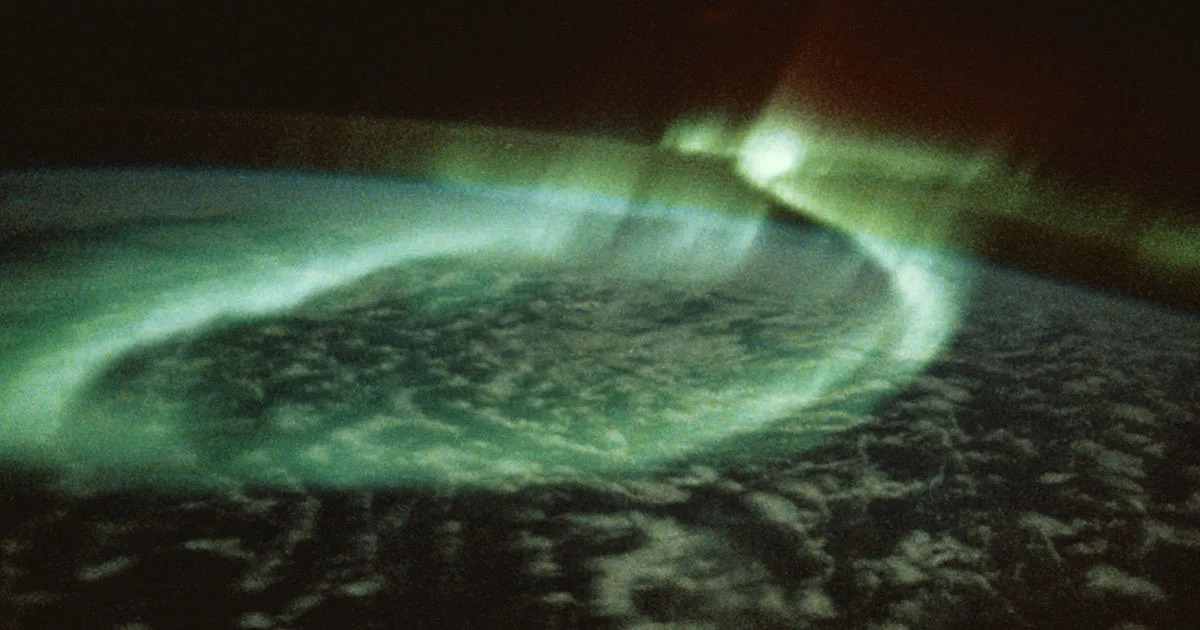
Dark Wave
Researchers suggest our planet is being battered by waves of dark matter, the elusive stuff that's believed to make up 27 percent of the universe, though scientists have yet to observe it directly.
As science communicator extraordinaire Paul Sutter explores in a piece for Live Science, the European authors of a yet-to-be-published paper posit that radio waves detected in the Earth's ionosphere — the part of the upper atmosphere where UV and X-ray radiation from the Sun ionizes atoms to create plasma — could be the result of particles interacting with dark matter, and therefore a great place to hunt for the evasive substance.
It's an intriguing albeit speculative theory that could take decades of research to prove. Nonetheless, the prize is certainly worth playing for, potentially putting to rest one of the biggest unanswered questions about the universe that persists today.
Cosmic Slog
Over the years, scientists have proposed several candidates for dark matter, including extremely massive particles called "Weakly Interacting Massive Particles" (WIMPs) or extremely light ones called "axions."
Thanks to axions' highly unusual lightness, these hypothetical particles may act more like "large waves that slosh around the cosmos," as Sutter explained.
That would also make them exceedingly difficult to observe. Instead of hunting for the particles themselves, scientists have long suggested looking for any interactions they have with other matter around them, including plasma, which is made of highly charged particles.
Now, a team of researchers from the University of Geneva and the European Organization for Nuclear Research (CERN) — which is at the forefront of our hunt for exotic particles — are suggesting a new place we could look: the Earth's ionosphere.
By studying how "waves of hypothetical dark matter" interact with ionized particles, per Sutter, we could come one small step closer to answering one of the biggest puzzles facing astrophysicists today.
While it's what Sutter calls a "long shot," with the right instruments, we may just have a chance to finally uncover dark matter's hidden identity.
"An electrically-small dipole antenna targeting the generated radio waves can be orders of magnitude more sensitive to dark photon and axion-like particle dark matter in the relevant mass range," the researchers write.
Better yet, the ionosphere is extremely close to us, making it a tantalizing place to hunt for dark matter.
"This form of dark matter is highly theoretical, and it would take years, if not decades, to perfect the observation technique to search for these radio waves," Sutter concluded. "But if it works, it would be a gold mine, allowing us to study one of the most mysterious elements in the universe right on our cosmic doorstep."
More on dark matter: Our World May Be Connected to an Anti-Universe, Scientist Says
Victor Tangermann
Wed, June 12, 2024

Boeing Leaks
After years of delays and technical problems, Boeing's Starliner finally made it to the International Space Station with NASA astronauts Butch Wilmore and Suni Williams on board last week.
But when exactly it'll be able to undock and deliver its crew of two back to the surface remains to be seen.
Teams have discovered an astonishing five different helium leaks so far, each representing yet another thorn in the spacecraft's already cursed development. The gas is "used in spacecraft thruster systems to allow the thrusters to fire" while navigating through space, according to Boeing.
NASA is giving Boeing another four days, extending Wilmore and Williams' mission onboard the ISS from June 14 to no earlier than June 18, though it's unclear whether the leaks are to blame for the delay. Boeing is still "assessing what impacts, if any, five small leaks in the service module helium manifolds would have on the remainder of the mission," according to an update.
Boeing has been through hell and back in its attempts to get its first crewed test flight off the ground, including countless delays, scrubs, technical screwups, and an unsuccessful uncrewed test flight back in 2019.
Where that leaves Starliner's future viability for providing NASA with a reliable way to get astronauts to the space station remains to be seen. While it has managed to dock with the ISS, its mission isn't over until Wilmore and Williams are safely back on the ground.
Hole Story
Last month, officials discovered the first helium leak, which was later underplayed by officials and determined not to be severe enough to delay its journey to the ISS.
On its way up, the capsule sprang even more helium leaks. Even docking procedures didn't initially go as planned, with Boeing calling off its first attempt due to reaction-control thrusters malfunctioning.
There's a lot we still don't know about Starliner's current status. Fortunately, engineers have determined that the capsule will have plenty of helium for its return mission, roughly ten times as much as it needs to maneuver through the near vacuum of space.
"While Starliner is docked, all the manifolds are closed per normal mission operations preventing helium loss from the tanks," Boeing explained in its update.
Meanwhile, NASA is making the most out of the situation.
"The additional time in orbit will allow the crew to perform a spacewalk on Thursday, June 13, while engineers complete Starliner systems checkouts," ISS officials tweeted, referring to two different space station crew members.
More on Starliner: Boeing's Starliner Has Trouble Docking With Space Station

